GWM ORA 07 vs VW ID.3 – ¿Cuál es la mejor opción?
Ambos modelos tienen sus puntos fuertes – pero, ¿cuál es el adecuado para ti?
Compara directamente rendimiento, consumo, precio y espacio: GWM ORA 07 o VW ID.3?
Electric Hatchbacks of Tomorrow: GWM ORA 07 vs VW ID.3
The electrifying battle between hatchbacks continues to intensify, as the 2024 GWM ORA 07 takes on the already popular VW ID.3. Both models bring their own innovations and technical prowess to the table. Let's delve into the specifics of these eco-friendly vehicles and see how they stack up against each other.
Power and Performance
When it comes to performance, the GWM ORA 07 offers impressive numbers with its most powerful version generating 408 HP and achieving 0-100 km/h in a swift 4.5 seconds. It has an all-wheel-drive system available, catering to those who desire dynamism and control. On the other hand, the VW ID.3 provides a range of power options, with the most powerful variant delivering 326 HP and completing the 0-100 km/h sprint in a respectable 5.7 seconds. The rear-wheel-drive ID.3 offers a sportier driving feel, appealing to enthusiasts who appreciate a hint of traditional rear-wheel dynamics.
Range and Efficiency
In terms of electric range, the VW ID.3 takes a slight edge, offering up to 604 km on a single charge for its top-tier variant, courtesy of its 79 kWh battery pack. The GWM ORA 07 offers a competitive maximum range of 520 km with its largest 83.5 kWh battery. The VW ID.3 is particularly efficient, boasting energy consumption of just 14.5 kWh/100km for its most efficient model, compared to the ORA 07's 16.5 kWh/100km for its most efficient setting.
Design and Practicality
Both hatchbacks are designed to catch the eye, with the GWM ORA 07 stretching to 4871 mm in length, exuding a more elongated and sleek appearance compared to the stockier 4264 mm VW ID.3. In terms of practicality, the ID.3 offers a larger trunk capacity of 385 liters, slightly outperforming the ORA 07's 333 liters. Both vehicles boast a similar design ethos with 5-door layouts, providing ample access and convenience.
Innovative Features
Inside, these cars come loaded with tech features aimed at enhancing the driving experience. The ORA 07 impresses with its futuristic interface and all-digital cockpit, offering a seamless digital experience complemented by advanced driver assistance systems. The ID.3, known for its user-friendly infotainment system, combines a minimalist design with an intuitive user interface, making it ideal for tech-savvy drivers.
Conclusion
Choosing between the GWM ORA 07 and the VW ID.3 boils down to personal preference and priorities. The ORA 07 appeals to those seeking high power and performance, while the ID.3 is a stellar choice for those prioritizing range and efficiency. Both are remarkable examples of what the future of electric hatchbacks holds, ensuring that no matter the choice, drivers will enjoy a sustainable and thrilling ride.
Aquí vienen los hechos: las diferencias técnicas en detalle
Costes y consumo: Al comparar precio y eficiencia suelen verse las mayores diferencias. Así se descubre cuál encaja mejor en el presupuesto a largo plazo.
VW ID.3 tiene una ventaja evidente en precio: parte desde 33900 €, mientras que el GWM ORA 07 cuesta 42700 €. La diferencia es de unos 8805 €.
En consumo eléctrico, la ventaja es para el VW ID.3: con 14.50 kWh cada 100 km, es ligeramente más eficiente que el GWM ORA 07, que necesita 16.50 kWh. La diferencia ronda los 2 kWh.
En autonomía, el VW ID.3 ofrece un rendimiento en pequeña medida mejor: alcanza hasta 605 km, unos 85 km más que el GWM ORA 07.
Motor y rendimiento: Debajo del capó se descubre qué modelo tiene un carácter más deportivo y quién acelera mejor.
En cuanto a potencia, el GWM ORA 07 tiene una ventaja notable: 408 HP frente a 326 HP. Eso supone un aumento de unos 82 HP CV.
En aceleración de 0 a 100 km/h, el GWM ORA 07 es distinto más rápido: 4.50 s frente a 5.70 s. Es aproximadamente 1.20 s más veloz.
En velocidad máxima, el VW ID.3 es ligero superior – alcanza 200 km/h, mientras que el GWM ORA 07 se queda en 180 km/h. La diferencia es de unos 20 km/h.
También hay diferencias en el par motor: el GWM ORA 07 empuja algo con 680 Nm frente a 545 Nm. La diferencia ronda los 135 Nm.
Espacio y practicidad: Habitabilidad, maletero y carga útil determinan la funcionalidad en el día a día. Aquí cuentan la comodidad y la flexibilidad.
Ambos modelos ofrecen espacio suficiente para 5 personas.
En peso en vacío, el VW ID.3 es un poco más ligero – 1787 kg frente a 2065 kg. La diferencia ronda los 278 kg.
En capacidad de maletero, el VW ID.3 ofrece en pequeña medida más espacio – 385 L frente a 333 L. La diferencia es de unos 52 L.
En capacidad máxima de carga, el VW ID.3 es ligeramente mejor – hasta 1267 L, unos 222 L más que el GWM ORA 07.
En capacidad de carga útil, el VW ID.3 claramente perceptible se impone – 473 kg frente a 350 kg. La diferencia es de unos 123 kg.
En general, el VW ID.3 se muestra ofrece un conjunto más equilibrado y se lleva el título de DriveDuel Champion.
Destaca por su equilibrio general y por ser el compañero más versátil en el día a día.
GWM ORA 07
El ORA 07 se presenta como una opción innovadora en el mercado de vehículos eléctricos, combinando un diseño moderno y atractivo con un enfoque sostenible. Su interior espacioso y tecnológico garantiza una experiencia de conducción cómoda y conectada para todos los pasajeros. Con una autonomía excepcional, el ORA 07 se posiciona como una alternativa ideal para quienes buscan un automóvil ecológico sin sacrificar estilo ni funcionalidad.
detallesVW ID.3
El ID.3 es un vehículo eléctrico que ha revolucionado el mercado por su enfoque en la sostenibilidad y la eficiencia. Con un diseño moderno y un interior espacioso, ofrece una experiencia de conducción cómoda y agradable. Además, su tecnología de conectividad lo convierte en una opción atractiva para los conductores conscientes del medio ambiente.
detalles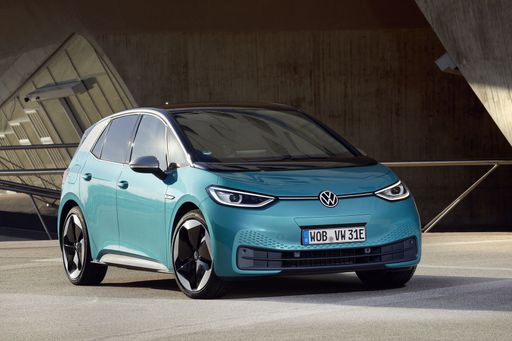 @ Volkswagen
@ Volkswagen
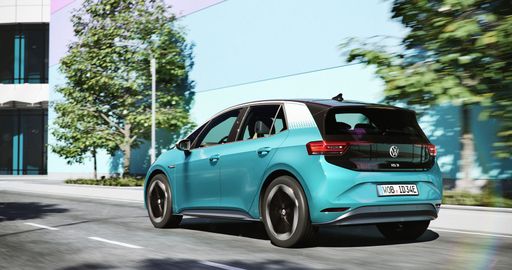 @ Volkswagen
@ Volkswagen
 @ Volkswagen
@ Volkswagen
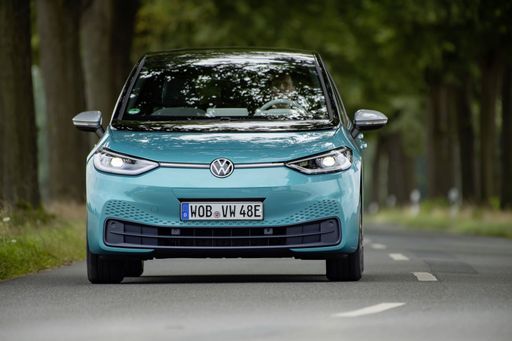 @ Volkswagen
@ Volkswagen
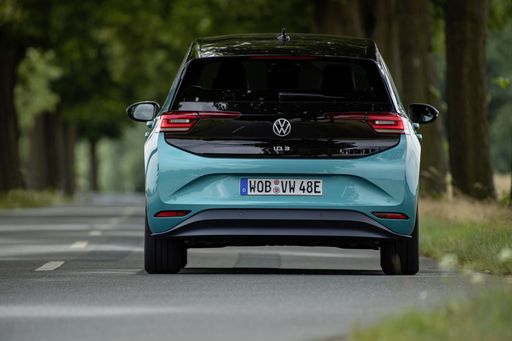 @ Volkswagen
@ Volkswagen
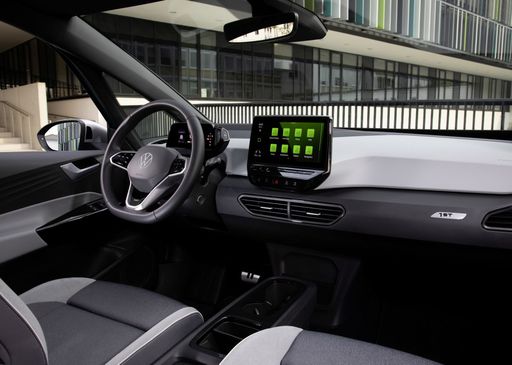 @ Volkswagen
@ Volkswagen
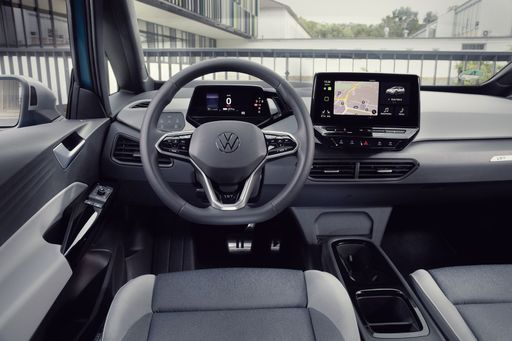 @ Volkswagen
@ Volkswagen

|
|
|
|
|
Costos y consumo |
|
|---|---|
|
Precio
42700 - 54400 €
|
Precio
33900 - 58500 €
|
|
Consumo L/100km
-
|
Consumo L/100km
-
|
|
Consumo kWh/100km
16.5 - 17.5 kWh
|
Consumo kWh/100km
14.5 - 15.8 kWh
|
|
Autonomía eléctrica
440 - 520 km
|
Autonomía eléctrica
383 - 605 km
|
|
Capacidad de la batería
64.3 - 83.5 kWh
|
Capacidad de la batería
52 - 79 kWh
|
|
co2
0 g/km
|
co2
0 g/km
|
|
Capacidad del tanque
-
|
Capacidad del tanque
-
|
Dimensiones y carrocería |
|
|---|---|
|
Tipo de carrocería
Hatchback
|
Tipo de carrocería
Hatchback
|
|
Asientos
5
|
Asientos
5
|
|
Puertas
5
|
Puertas
5
|
|
Peso en vacío
2065 - 2210 kg
|
Peso en vacío
1787 - 1993 kg
|
|
Capacidad del maletero
333 L
|
Capacidad del maletero
385 L
|
|
Longitud
4871 mm
|
Longitud
4264 mm
|
|
Anchura
1862 mm
|
Anchura
1809 mm
|
|
Altura
1500 mm
|
Altura
1564 mm
|
|
Capacidad máxima del maletero
1045 L
|
Capacidad máxima del maletero
1267 L
|
|
Capacidad de carga
350 kg
|
Capacidad de carga
437 - 473 kg
|
Motor y rendimiento |
|
|---|---|
|
Tipo de motor
Eléctrico
|
Tipo de motor
Eléctrico
|
|
Transmisión
Automática
|
Transmisión
Automática
|
|
Detalle de transmisión
Caja de reducción
|
Detalle de transmisión
Caja de reducción
|
|
Tipo de tracción
Tracción total, Tracción delantera
|
Tipo de tracción
Tracción trasera
|
|
Potencia HP
204 - 408 HP
|
Potencia HP
170 - 326 HP
|
|
Aceleración 0-100km/h
4.5 - 8.2 s
|
Aceleración 0-100km/h
5.7 - 8.2 s
|
|
Velocidad máxima
170 - 180 km/h
|
Velocidad máxima
160 - 200 km/h
|
|
Par motor
340 - 680 Nm
|
Par motor
310 - 545 Nm
|
|
Número de cilindros
-
|
Número de cilindros
-
|
|
Potencia kW
150 - 300 kW
|
Potencia kW
125 - 240 kW
|
|
Cilindrada
-
|
Cilindrada
-
|
General |
|
|---|---|
|
Año del modelo
2024
|
Año del modelo
2024 - 2025
|
|
Clase de eficiencia de CO2
A
|
Clase de eficiencia de CO2
A
|
|
Marca
GWM
|
Marca
VW
|
¿El GWM ORA 07 se ofrece con distintas tracciones?
Disponible con Tracción total o Tracción delantera.
Los precios y datos mostrados son estimaciones basadas en los precios de lista en Alemania y pueden variar según el país. Esta información no es legalmente vinculante.
